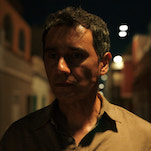The New Cult Canon: The Blair Witch Project
“I make one film as a filmmaker, but the audience, based on that film, makes 100 movies in their minds. Every audience member can make his own movie. This is what I strive for. Sometimes, when my audiences tell me about the mental movies they have made based on my movie, I am surprised, and I become the audience for their movies as they are describing them to me. My movie has only functioned as a base for them to make their movies.” —Abbas Kiarostami
I first heard the great Iranian director Abbas Kiarostami (A Taste Of Cherry) espousing his ideas about how the audience “completes” his movies around the time he released The Wind Will Carry Us in 1999. That also happened to be the same year The Blair Witch Project became a cultural phenomenon. For someone weaned on Hollywood movies, the thought was heretical, especially in reference to a film as difficult as The Wind Will Carry Us: Why can’t Kiarostami finish his own movie? Aren’t we, as audience members, entitled to see a filmmaker’s complete vision? And isn’t this just a ready-made excuse for work that’s half-conceived and half-executed?
It didn’t occur to me at the time, but Kiarostami’s radical concept is the reason The Blair Witch Project became an anomaly of anomalies, a $60,000 independent film that somehow found its way onto thousands of screens and ran off with $140 million. It’s also the reason some viewers left the theater flummoxed and angry over paying hard-earned money (why do those who feel ripped off always work so hard for their ill-spent dollars?) for a horror film that offers nothing more tangible than bundled twigs and piles of rocks. Directors Daniel Myrick and Eduardo Sanchez were fiendishly clever on two levels: They came up with a found-footage gimmick that flowered in people’s imaginations long before they even entered the theater, and they made a movie that the audience actively participates in creating, just as Kiarostami describes it. To some, like myself, the experience of padding around the film’s dark, uncertain twilight zone of a forest remains terrifying to this day; to others, it’s just a bunch of twigs and rocks, and thus possibly the biggest bait-and-switch scam ever perpetrated on the American moviegoing public.
The Blair Witch Project opens with this epigram, written in elemental white-on-black typeface: In October of 1994, three student filmmakers disappeared in the woods near Burkittsville, Maryland, while shooting a documentary. A year later their footage was found.
Genius.
With a premise that good, making the movie almost seems superfluous. Indeed, between the film’s première as a buzzed-about midnight movie at Sundance in January and its official release in late July, the Blair Witch legend flourished on the website, which did nothing to suggest that the events described in that famous epigram weren’t real. The classic campfire yarn of a centuries-old witch still haunting the woods outside a Maryland town gained instant urban-legend status well before most people saw the movie. And I’m guessing that the website and the movie’s straight-faced verisimilitude had a handful of people believing that the footage they were seeing was going to be as real as the debris in Al Capone’s vault. After all, if three student filmmakers did disappear into Burkittsville’s fabled woods, and their equipment was discovered in a backpack a year later, then naturally you’d look to the footage to see what happened to them, yes? (And if you believe that it really happened, I’d advise against visiting the sewers of New York City. I hear there are alligators down there.)
Using their real names for added realism, actors Heather Donahue, Joshua Leonard, and Michael Williams star as Heather, Josh, and Mike, the director, cameraman, and soundman, respectively, on a documentary project about the legendary “Blair Witch.” Armed with a video camera, a 16mm camera with black-and-white stock, and a DAT (Digital Audio Tape) sound recorder, the three head out for a weekend shoot in the woods. They stop first in Burkittsville for some man-on-the-street interviews, which have been improvised to such uncanny effect that viewers can be forgiven for assuming temporarily that they’re watching non-fiction. (The anecdotes also prime the pump for events to come, including the famed final shot.) We learn that the town was once called Blair, and that in the ’40s, there were an unusual number of disappearances, especially among the town’s children. We also learn that some of the townspeople are certain that the woods are still haunted, and that one citizen—a creepy old woman named Mary Brown—claims she encountered the Blair Witch, whom she describes as a hirsute half-human creature. (Many message-board denizens have speculated that Brown herself is the Blair Witch, since she’s the only one to have survived an encounter, and the fence leading into her trailer is assembled out of sticks.)
Once in the forest, the three follow their not-so-trusty map to locales like “Coffin Rock,” the site of a ritualistic murder involving a disemboweled search party, and a cemetery that’s perpetually on the horizon, but somehow never reachable. As day passes into night and the trail seems to wind in a perpetual loop, the gang encounters an escalating series of unsettling events: Strange cracking and cackling sounds emanating from 360 degrees outside their tent; an unnatural formation of rock piles in a wood clearing; and finally, a fresh rock pile in front of their tent the morning after a night of spooky activity. They try to explain away the problem as the locals fucking with them—which only gives them a tiny measure of solace, since they’ve no doubt seen Deliverance—but when they come across scenes like the following, they find it hard to deny the presence of a supernatural hand:
During the day, Heather, Mike, and Josh frantically search for a way out of the woods, but the map isn’t getting them anywhere; worse yet, it seems like no matter what direction they choose, they wind up circling back to the same log and the same stream. At first, the guys take out their frustration on Heather, who orchestrated what was supposed to be a well-scouted hike, but never seemed to know where they were or where they were going, in spite of her protestations to the contrary. When the map goes missing, Mike (who crosses the crazy threshold first) claims to have kicked it into the river because it was useless; naturally, his mates are apoplectic, not least because they know he’s right. The map won’t lead them out of the woods, and neither will the compass. Shortly after they embark on their misadventure, the forest seems to close in on them, its borders still indeterminate, but its parameters somehow shrinking until they can hike all day long, then sleep in roughly the same spot they did the night before.

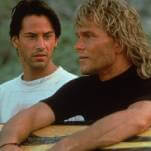

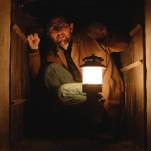





![Rob Reiner's son booked for murder amid homicide investigation [Updated]](https://img.pastemagazine.com/wp-content/avuploads/2025/12/15131025/MixCollage-15-Dec-2025-01-10-PM-9121.jpg)

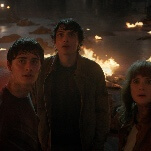
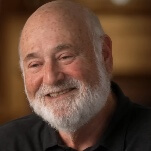
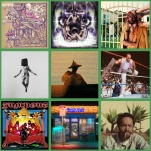


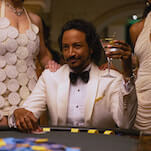

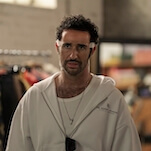
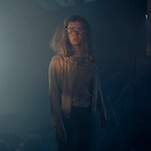











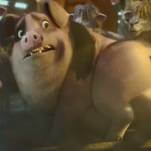
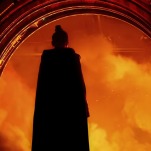
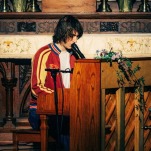

![HBO teases new Euphoria, Larry David, and much more in 2026 sizzle reel [Updated]](https://img.pastemagazine.com/wp-content/avuploads/2025/12/12100344/MixCollage-12-Dec-2025-09-56-AM-9137.jpg)



